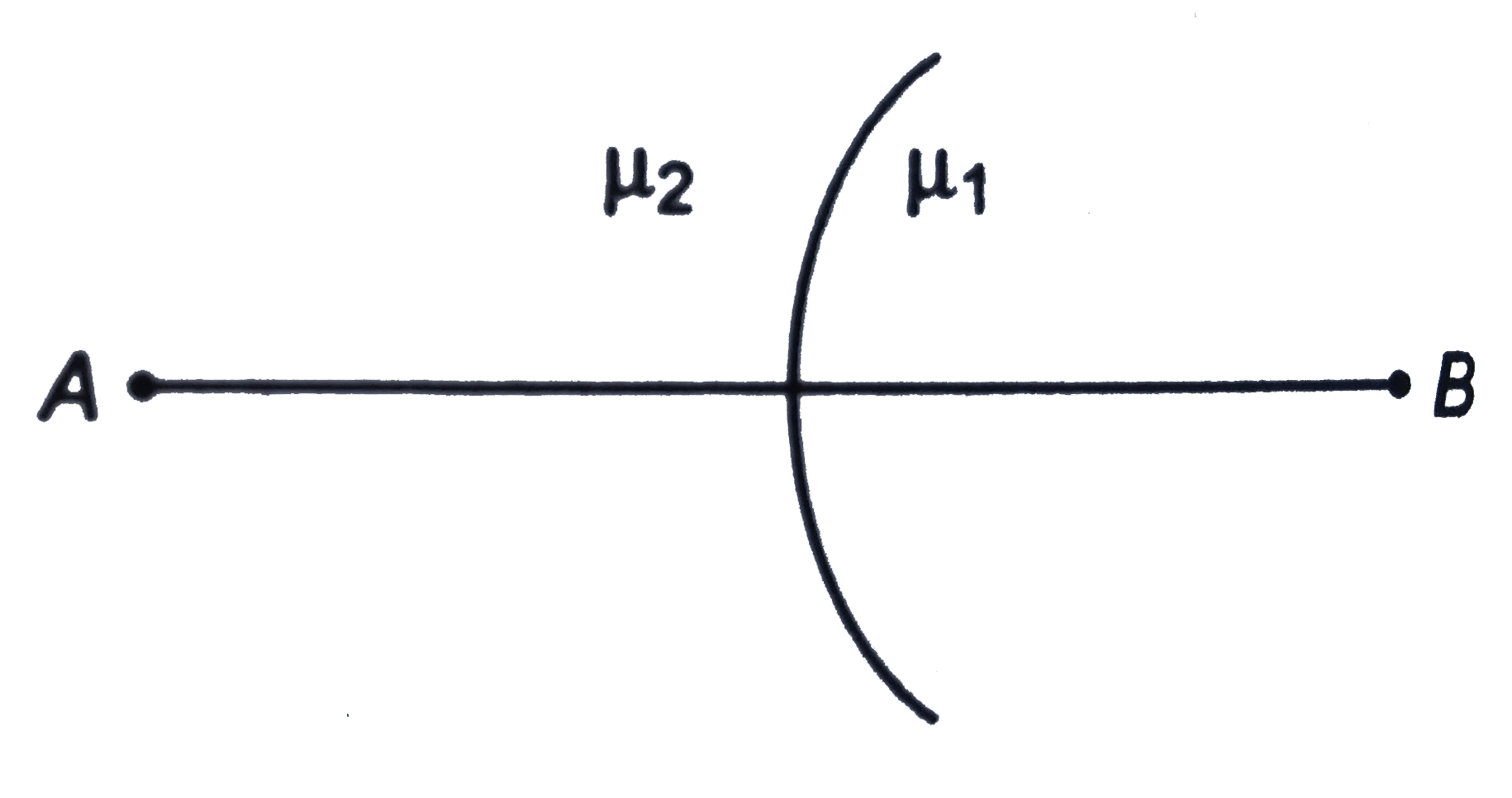The first factor length f1 for refraction at a spherical surface is defined as the value of u corresponding to v=∞ (as shown) with refractive indices of two mediums, as n1 and n2. The second focal length f2 is defined as value of v for u=∞.

f2 is equal to n2R(n2−n1)
f1 is equal to n2R(n2−n1)
f2 is equal to (-) n2R(n2−n1)
f1 is equal to (-) n1R(n2−n1)
The correct Answer is:A, D
Step by step video & image solution for The first factor length f_(1) for refraction at a spherical surface is defined as the value of u corresponding to v=oo (as shown) with refractive indices of two mediums, as n_(1) and n_(2). The second focal length f_(2) is defined as value of v for u=oo. by Physics experts to help you in doubts & scoring excellent marks in Class 12 exams.
Updated on:21/07/2023Topper's Solved these Questions
- RAY OPTICSBOOK - CENGAGE PHYSICS ENGLISHCHAPTER - RAY OPTICSEXERCISE - DPP 1.4
15 Videos
- RAY OPTICSBOOK - CENGAGE PHYSICS ENGLISHCHAPTER - RAY OPTICSEXERCISE - DPP 1.5
13 Videos
- RAY OPTICSBOOK - CENGAGE PHYSICS ENGLISHCHAPTER - RAY OPTICSEXERCISE - DPP 1.2
15 Videos
- PHOTOELECTRIC EFFECTBOOK - CENGAGE PHYSICS ENGLISHCHAPTER - PHOTOELECTRIC EFFECTEXERCISE - Integer Type
4 Videos
- SOURCES OF MAGNETIC FIELDBOOK - CENGAGE PHYSICS ENGLISHCHAPTER - SOURCES OF MAGNETIC FIELDEXERCISE - single correct Ansewer type
12 Videos
Similar Questions
Two thin lenses of focal lengths f1 and f2 are in contact. The focal length of this combination is
View SolutionObtain an expression for refraction at a single convex spherical surface separating the two media having refractive indices μ1(rarer medium) and μ2(denser medium) i.e., a relation between u,v,μ1,μ2 and R.
View Solution
Knowledge Check
Assertion : The radius of curvature of a mirror is double of the focal length.
Reason : A concave mirror of focal length f in air is used in a medium of refractive index 2. Then the focal length of mirror in medium becomes 2f.AIf both assertion and reason are true and reason is the correct explanation of assertion.BIf both assertion and reason are true and reason is not the correct explanation of assertion.CIf assertion is true but reason is false.DIf both assertion and reason are false.
A lens made of material of Refractive index μ2 is surrounded by a medium of Refractive Index μ1. The focal length f is related as
View SolutionA lens made of material of Refractive index μ2 is surrounded by a medium of Refractive Index μ1. The focal length f is related as
View SolutionTwo refracting media are separated by a spherical interfaces as shown in the figure. AB is the principal axis, μ1andμ2 are the refractive indices of medium of incidence and medium of refraction respectively. Then,

View SolutionThe refractive index of a lens material is 1.5 and focal length f. Due to some chemical changes in the material, its refractive index has increased by 2%. The percentage change in its focal length is
View SolutionIf u1 and u2 are the units selected in two systems of measurement and n1 and n2 their numerical values, then
View Solutionµ_(1) and µ2 are the refractive index of two mediums and v1 and v2 are the velocity of light in these in two mediums respectively. Then, the relation connecting these quantities is
View SolutionImage distance |v| vs object distance |u| curve for two biconvex lenses with same radii of curvatures is shown in the figure. If refractive index of lens 1 is 52, then refractive index of lens 2 is.

View Solution
